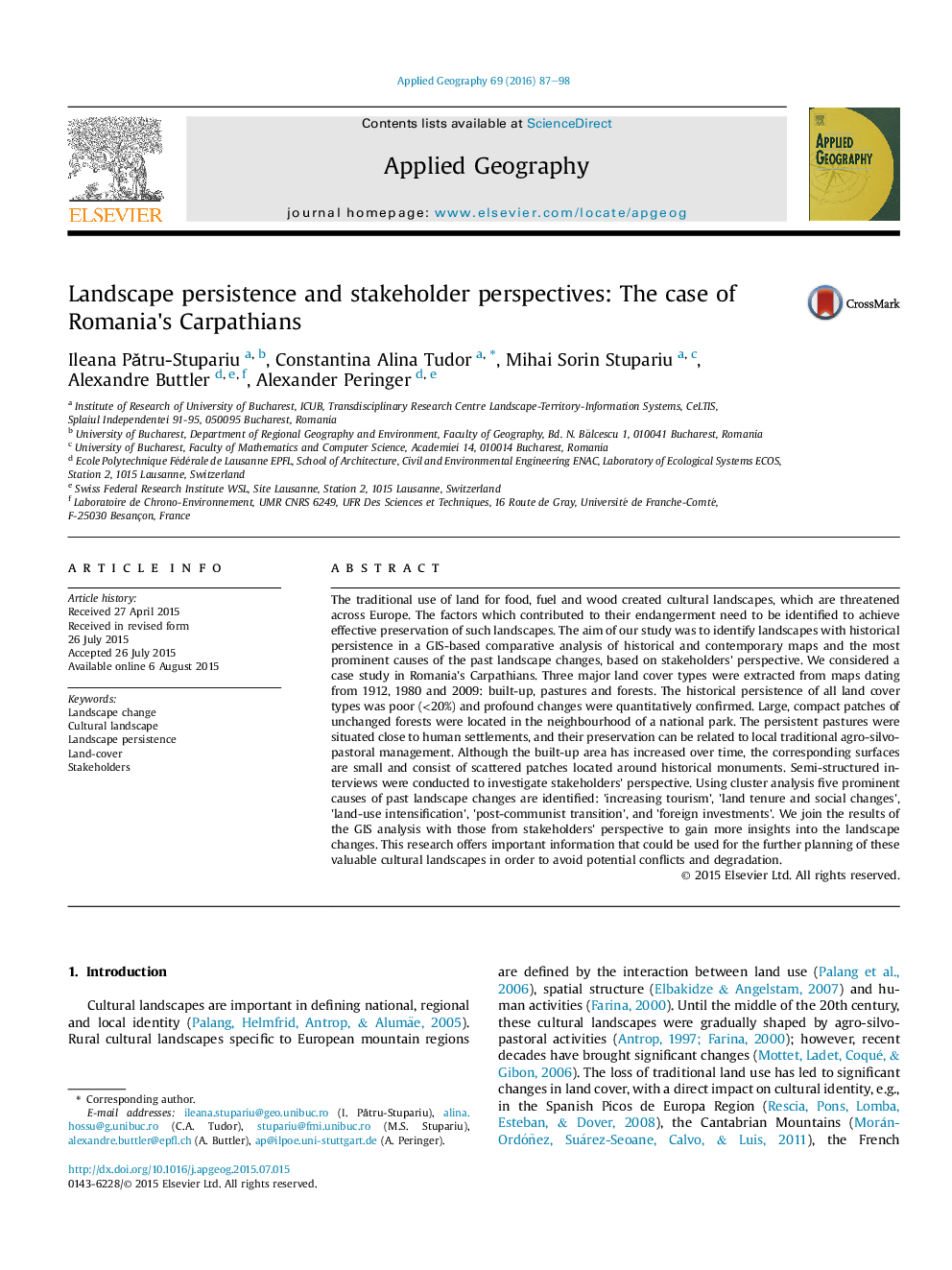| کد مقاله | کد نشریه | سال انتشار | مقاله انگلیسی | نسخه تمام متن |
|---|---|---|---|---|
| 83166 | 158692 | 2016 | 12 صفحه PDF | دانلود رایگان |

• Assessing historical continuity and landscape change with ancillary and recent maps.
• Investigating stakeholders' perspective on the basis of the cartographic analyses.
• Five causes of past landscape changes are identified using hierarchical clustering.
The traditional use of land for food, fuel and wood created cultural landscapes, which are threatened across Europe. The factors which contributed to their endangerment need to be identified to achieve effective preservation of such landscapes. The aim of our study was to identify landscapes with historical persistence in a GIS-based comparative analysis of historical and contemporary maps and the most prominent causes of the past landscape changes, based on stakeholders' perspective. We considered a case study in Romania's Carpathians. Three major land cover types were extracted from maps dating from 1912, 1980 and 2009: built-up, pastures and forests. The historical persistence of all land cover types was poor (<20%) and profound changes were quantitatively confirmed. Large, compact patches of unchanged forests were located in the neighbourhood of a national park. The persistent pastures were situated close to human settlements, and their preservation can be related to local traditional agro-silvo-pastoral management. Although the built-up area has increased over time, the corresponding surfaces are small and consist of scattered patches located around historical monuments. Semi-structured interviews were conducted to investigate stakeholders' perspective. Using cluster analysis five prominent causes of past landscape changes are identified: 'increasing tourism', 'land tenure and social changes', 'land-use intensification', 'post-communist transition', and 'foreign investments'. We join the results of the GIS analysis with those from stakeholders' perspective to gain more insights into the landscape changes. This research offers important information that could be used for the further planning of these valuable cultural landscapes in order to avoid potential conflicts and degradation.
Figure optionsDownload as PowerPoint slide
Journal: Applied Geography - Volume 69, April 2016, Pages 87–98